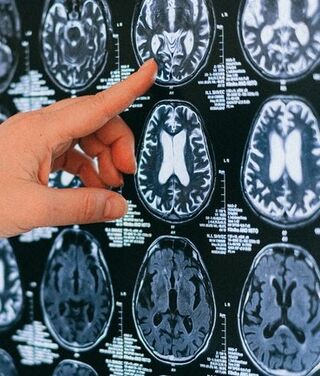Psychosis
Psychosis May Not Be What You Think It Is
Psychosis is more than schizophrenia and hearing voices.
Posted September 7, 2021 Reviewed by Jessica Schrader
Key points
- Schizophrenia may be the best-known psychotic condition, but several other diagnostic categories harbor psychotic features.
- Psychotic symptoms are much more expansive than hallucinations and paranoia.
- Not all psychosis is treated similarly; differentiating the various presentations is essential to proper care.
Psychosis is much more than schizophrenia. While this disease is considered king of the psychotic disorder realm, psychotic symptoms are found throughout diagnostic categories and can also be quite severe.

The term psychosis hails from the Greek psyche, meaning "mind," and osis, meaning "abnormal condition of." The term evolved in psychiatry to indicate a split with reality (i.e., hallucinations and delusions) or formal thought disorder (severe thought disorganization).
It's also important to note that psychotic symptoms are much more than the hallmark hallucinatory and delusional symptoms most often portrayed. There are also disorganized, catatonic, and "negative" symptoms—negative meaning there is an absence of things that should be present, like affective expression, speech, or substantial thought content.
The Spectrum of Psychotic Disorders
In modern times, we find the psychotic disorder category, or what is called the "Schizophrenia and Related Disorders" chapter in the Diagnostic and Statistical Manual of Mental Disorders, 5th edition (DSM-5), to include six specific, separate conditions. These are:
- Schizophrenia
- Schizophreniform disorder
- Brief psychotic disorder
- Schizoaffective disorder (major depressive and bipolar types)
- Delusional disorder
- Schizotypal personality disorder
While the last item is a personality disorder and is also included in that chapter, chronic, low-level psychotic symptoms are so much a part of the person’s personality, it is considered to be within both diagnostic spectrums. (Readers can learn more about this in the post "Schizophrenia or Schizotypal Personality?")
The common thread of the above is that the base problem is psychosis. Numerous other disorder categories can harbor psychotic features. This means that during the course of the illness/episode, there are superimposed hallucinations, delusions, or disorganized psychotic symptoms.
Conditions with Psychotic Features
Perhaps the best-known of these is major depression with psychotic features, or, during bipolar Type 1 illness, manic episodes with psychotic features. It is not unusual for very depressed people to, say, hear voices about how big of a loser they are, or have such guilt it takes on delusional proportions like believing they are possessed. While grandiosity is a common mind frame of manic people, very often they step over the line to believing they have a superpower or are a deity.
Still others, such as obsessive-compulsive, hoarding, and body dysmorphic disorders, have a "with absent insight/delusional beliefs" specifier. This would be applied when the person is convinced their obsessions are true, that hoarding is necessary and not problematic despite contrary evidence, or that beliefs about perceived bodily flaws are true despite conflicting, objective evidence.
In the personality disorder category, those in Cluster A are "semi-psychotic" in nature. In addition to the aforementioned schizotypal, there are also the schizoid and paranoid. People with schizoid personalities exhibit social withdrawal, lack of emotional expression, and indifference—or what are known as negative symptoms in psychosis. The paranoid personality is always highly suspicious of the motives and intentions of others, and that sometimes reaches fully delusional proportions.
Fleeting psychosis also turns up in borderline personality disorder. In fact, this condition is referred to as “borderline” because the patient, according to the psychoanalyst Otto Kernberg, who coined the term, walks the borderline of neurosis and psychosis (Shannon, 2019). Some people with BPD become so stressed with concerns of abandonment or rejection that they have brief spells of auditory hallucinations and/or paranoid delusions related to the relationship in question. For example, if a partner had to reschedule a date night, many BPD patients may think, “They probably met someone else." For others, it may become a full-blown paranoia that they’ve been two-timing and are conspiring with their real lover in another state to hurt you.

The last diagnostic category to present psychotic symptoms is the trauma and stressor-related conditions. Sometimes, people with dissociative identity disorder (DID), which was historically known as multiple personality disorder, report hearing voices of their other identities, and may appear to be paying attention to a conversation the rest of us can’t hear. Anyone who works with PTSD has likely heard patients mention hearing, seeing, feeling, tasting, or smelling things related to the traumatic situation.
The Importance of Differentiating
With all of this variation, it may be difficult for many clinicians to differentiate what condition they are assessing. This is especially true of a mood disorder with psychotic features and schizoaffective disorder, or a sufficiently paranoid borderline personality from a brief psychotic disorder. Though there may be similarities, it is not sufficient to just recognize symptoms of psychosis and try to target them; knowing what pattern they are a part of will direct proper care. The psychosis of schizophrenia relies heavily on long-term pharmacology, while the borderline personality will likely be helped by working on their fears of abandonment, for example.
Despite the expansive nature of the psychotic spectrum, with some attention to a few particular details, differential diagnosis becomes a fairly easy process. First, however, it will be important to review the psychotic symptom categories and how they come together to make the conditions. Stay tuned for 4 Categories of Psychotic Symptoms regarding the positive, negative, disorganized, and catatonic symptoms of psychosis.
LinkedIn image: panitanphoto/Shutterstock. Facebook image: Marjan Apostolovic/Shutterstock
References
Diagnostic and Statistical Manual of Mental Disorders: Diagnostic and Statistical Manual of Mental Disorders, Fifth Edition. Arlington, VA: American Psychiatric Association, 2013.
Shannon, Joseph W. (2019, October 25). Character flaws: How to understand and navigate relationships with high conflict individuals. Brattleboro Retreat, Brattleboro, Vermont.




